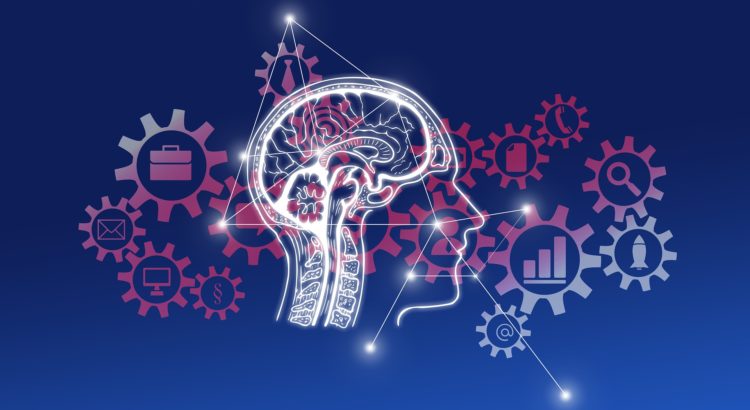It was April Fools’ Day, but the Artificial Intelligence (AI) webcast the SNIA Cloud Storage Technologies Initiative (CSTI) hosted on April 1st was no joke! We were fortunate to have AI experts, Glyn Bowden and James Myers, join us for an interesting discussion on the impact AI is having on data strategies. If you missed the live event, you can watch it here on-demand. The audience asked several great questions. Here are our experts’ answers:
Q. How does the performance requirement of the data change from its capture at the edge through to its use
A. That depends a lot on what purpose the data is being captured for. For example, consider a video analytics solution to capture real-time activities. The data transfer will need to be low latency to get the frames to the inference engine as quickly as possible. However, there is less of a need to protect that data, as if we lose a frame or two it’s not a major issue. Resolution and image fidelity are already likely to have been sacrificed through compression. Now think of financial trading transactions. It may be we want to do some real-time work against them to detect fraud, or feedback into a market prediction engine; however we may just want to push them into an archive. In this case, as long as we can push the data through the acquisition function quickly, we don’t want to cause issues for processing new incoming data and have side effects like filling up of caches etc, so we don’t need to be too concerned with performance. However, we MUST protect every transaction. This means that each piece of data and its use will dictate what the performance, protection and any other requirements are required as it passes through the pipeline.
Q. Need to think of the security, who is seeing the data resource?
A. Security and governance is key to building a successful and flexible data pipeline. We can no longer assume that data will only have one use, or that we know in advance all personas who will access it; hence we won’t know in advance how to protect the data. So, each step needs to consider how the data should be treated and protected. The security model is one where the security profile of the data is applied to the data itself and not any individual storage appliance that it might pass through. This can be done with the use of metadata and signing to ensure you know exactly how a particular data set, or even object, can and should be treated. The upside to this is that you can also build very good data dictionaries using this metadata, and make discoverability and audit of use much simpler. And with that sort of metadata, the ability to couple data to locations through standards such as the SNIA Cloud Data Management Interface (CDMI) brings real opportunity.
Q. Great overview on the inner workings of AI. Would a company’s Blockchain have a role in the provisioning of AI?
A. Blockchain can play a role in AI. There are vendors with patents around Blockchain’s use in distributing training features so that others can leverage trained weights and parameters for refining their own models without the need to have access to the original data. Now, is blockchain a requirement for this to happen? No, not at all. However, it can provide a method to assess the providence of those parameters and ensure you’re not being duped into using polluted weights.
Q. It looks like everybody is talking about AI, but thinking about pattern recognition / machine learning. The biggest differentiator for human intelligence is – making a decision and acting on its own, without external influence. Little children are good example. Can AI make decisions on its own right now?
A. Yes and no. Machine Learning (ML) today results in a prediction and a probability of its accuracy. So that’s only one stage of the cognitive pipeline that leads from observation, to assessment, to decision and ultimately action. Basically, ML on its own provides the assessment and decision capability. We then write additional components to translate that decision into actions. That doesn’t need to be a “Switch / Case” or “If this then that” situation. We can plug the outcomes directly into the decision engine so that the ML algorithm is selecting the outcome desired directly. Our extra code just tells it how to go about that. But today’s AI has a very narrow focus. It’s not general intelligence that can assess entirely new features without training and then infer from previous experience how it should interpret them. It is not yet capable of deriving context from past experiences and applying them to new and different experiences.
Q. Shouldn’t there be a path for the live data (or some cleaned-up version or output of the inference) to be fed back into the training data to evolve and improve the training model?
A. Yes there should be. Ideally you will capture in a couple of places. One would be your live pipeline. If you are using something like Kafka to do the pipelining you can split the data to two different locations and persist one in a data lake or archive and process the other through your live inference pipeline. You might also then want your inference results pushed out to the archive as well as this could be a good source of “training data”; it’s essentially labelled and ready to use. Of course, you would need to manually review this, as if there is inaccuracy in the model, a few false positives can reinforce that inaccuracy.
Q. Can the next topic focus be on pipes and new options?
A. Great Idea. In fact, given the popularity of this presentation, we are looking at a couple more webcasts on AI. There’s a lot to cover! Follow us on Twitter @SNIACloud for dates of future webcast.
